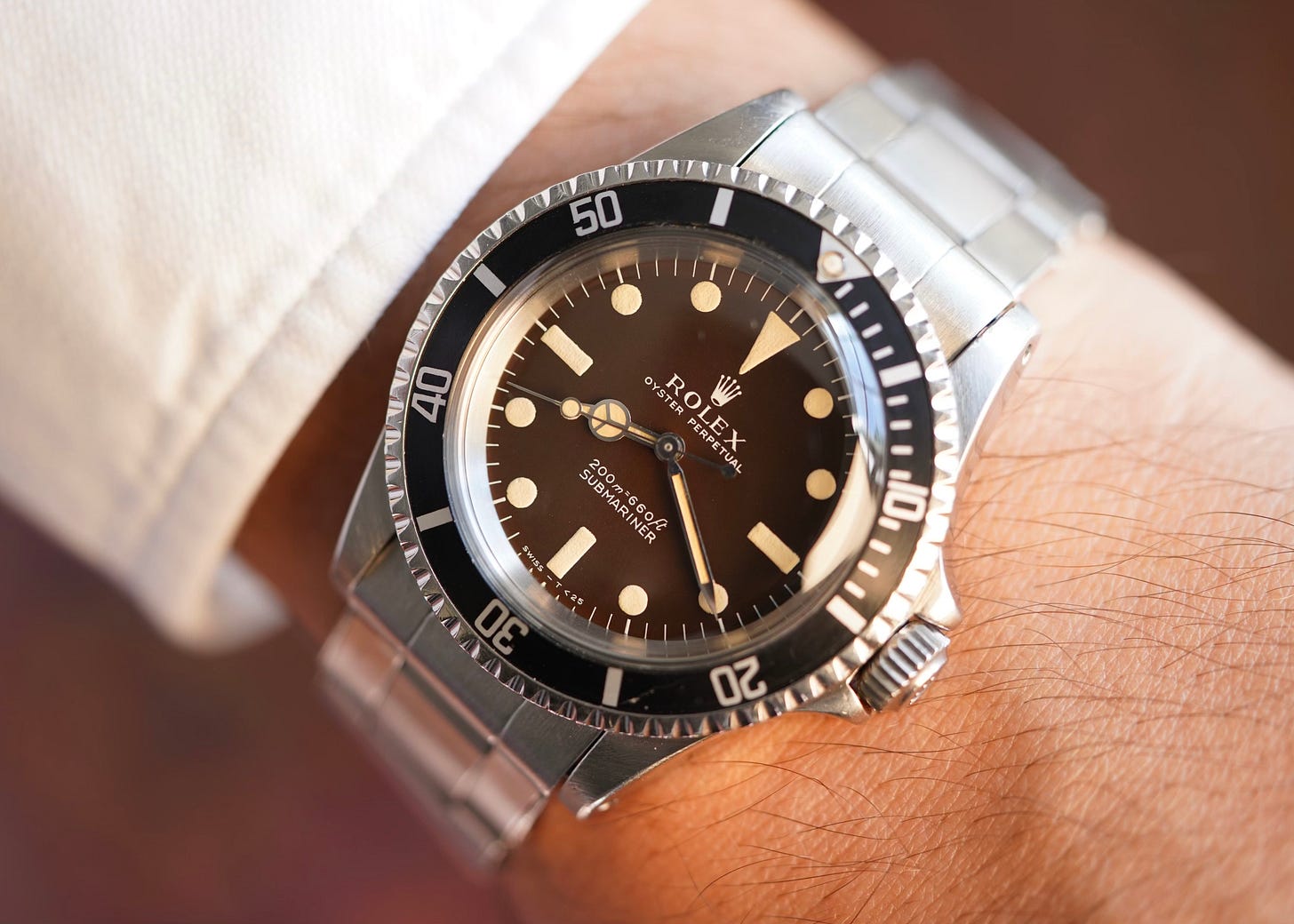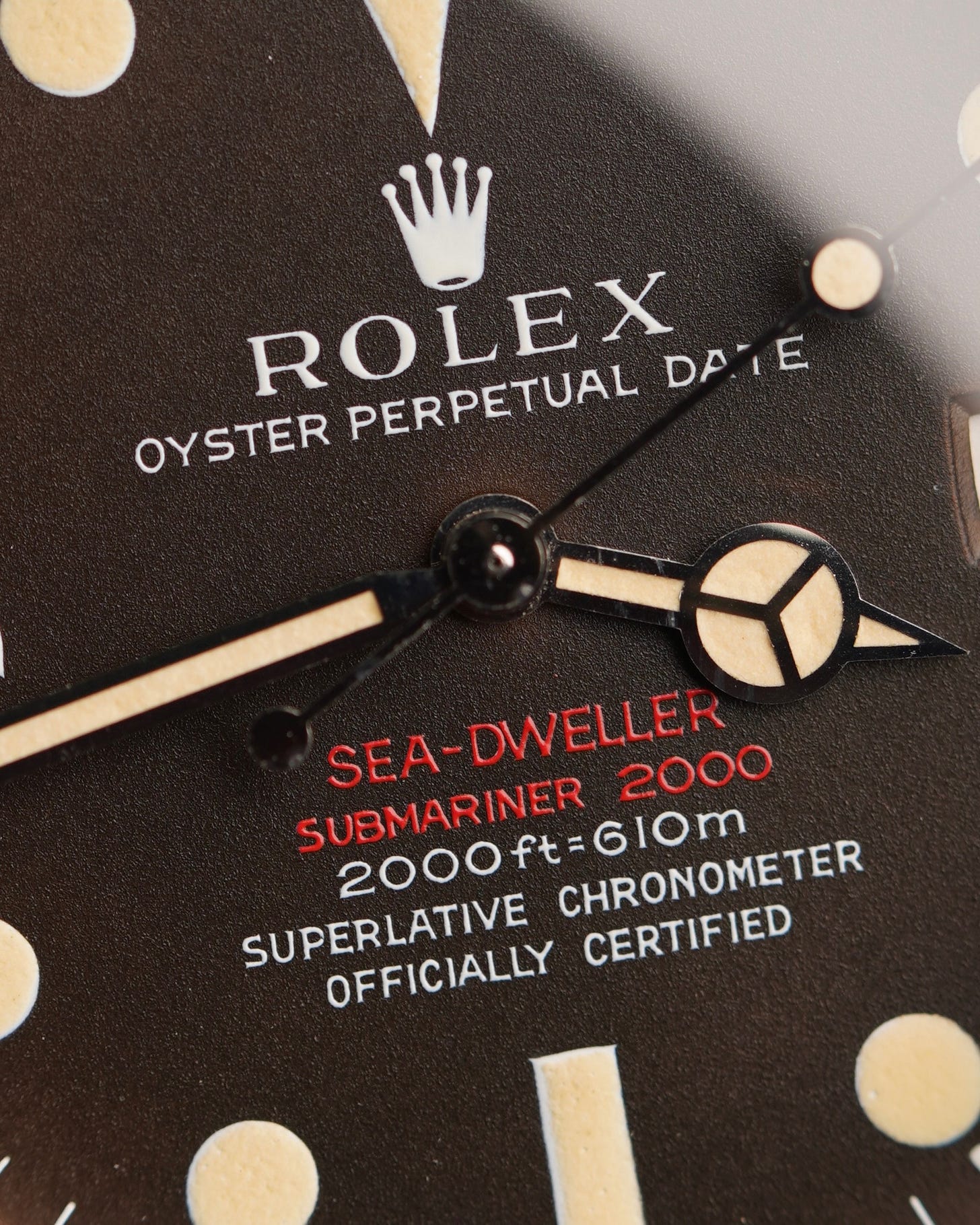ChatGPT will tell you that “A tropical dial refers to a watch dial that has developed a unique patina over time, typically due to prolonged exposure to sunlight, heat, and humidity.”
I can see where this came from as a flat definition, but what’s missing (sorry, Chat) is a lot of nuance and some very important context. Two points to start with: For one, however desirable the concept of a tropical dial has become for dealers and collectors, it’s still a flaw—a unique patina caused by imperfections in the process of manufacturing the dial. It’s technically a damaged dial. Secondly, many dials have patina, but few can (should) be noted as tropical. But somehow in the last few years, more and more watches with patina are being considered or sold as “tropical.” That’s what I want to talk about.
Why are we so obsessed with this characteristic that confuses us, causes controversy, and is most of the time impossible to define? Some watches with a tropical dial are triple the value of the same watch with a normal dial, for reasons no one can scientifically explain (although there are plenty of people that feel their arguments are complete). And from where I’m sitting, outside the value of its inherent rarity, no one really cares about the why.
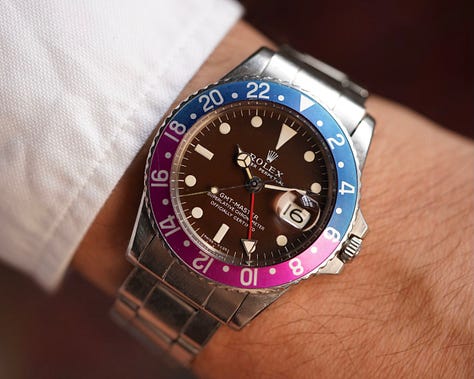
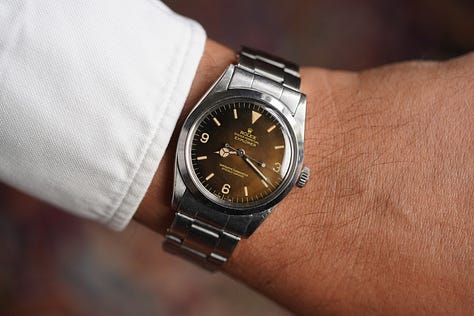
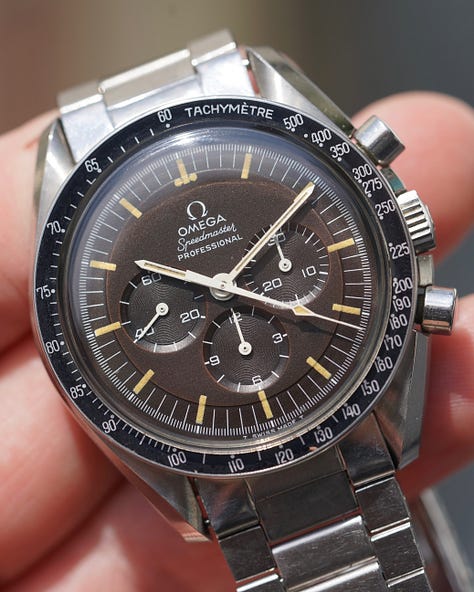
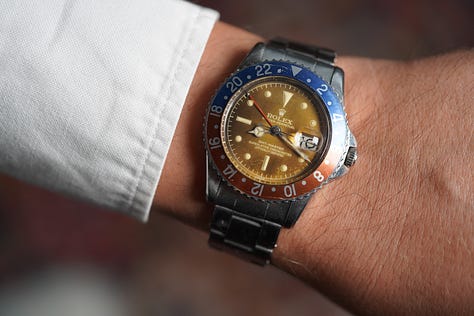
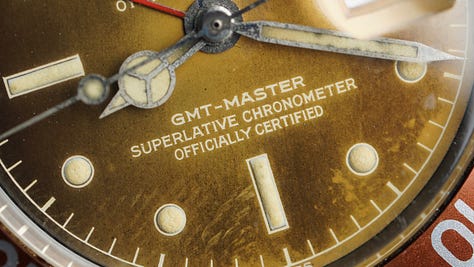

THE COLOR BROWN
Let’s start with the color itself. IYKYK—when it comes to tropical dials, brown is the color that usually comes to mind. Those rich hues of caramel, cognac, and honey** aren’t intentional; they’re the result of time, heat, and some will tell you, humidity. Often, the discoloration comes from years in hot climates—hence, tropical. Or, in some cases, from a watch sitting untouched in a dark safety deposit box for who knows how long, after some exposure to the elements. At the heart of this transformation is Zapon, a transparent nitrocellulose-based varnish applied as the final protective layer on a dial. It’s used to guard against corrosion and control the finish to matte or glossy. A less-than-perfect application or a flawed mixture allows the paint beneath to shift and age, creating that (now) coveted tropical effect. Given the precision of watch manufacturing, this doesn’t happen very often anymore (more on that later).
**sometimes even cream, not to be confused with Cream dials on a certain date range of Explorer II, 116520 Daytonas, and Datejusts.
Traditionally, when most collectors hear “tropical", it’s a dial that’s changed from black to brown. Oracle Time says: “The term originates from the early days of the Vintage Rolex Forum (VRF) when in the early 2000s a group of like-minded passionate Rolex collectors would virtually hang out and discuss all things Wilsdorf…what is either forgotten or unknown is that a huge proportion of what is generally accepted as ‘gospel’ when it comes to vintage Rolex, was actually discussed, dissected, and defined during the VRF’s heyday.”
After that, “tropical” expanded to include many dials with different patterns and colors. Some purists say that nearly anything else is simply a damaged watch, while collectors and dealers will argue against this. I’ve landed somewhere in the middle. (Convince me otherwise.) The role of humidity in the life of a tropical dial is HOTLY debated. Some insist that moisture plays no part, that any sign of water damage disqualifies a dial from being truly tropical. Others say it’s the key factor in achieving the desired effect. This leads to some understandable confusion with buyers and sellers.
An interesting detail: Dials from the 1950s–1960s are the most common to turn tropical, due to that mistake—if that’s what it was—in Zapon. Was it mixed too thin? Applied incorrectly? No one seems to know, but it left the dial overexposed to UV light. I haven’t been able to finger exactly what happened here, and I’ve been looking into it for months, but this 10-ish-year span of flawed Zapon is widely agreed to be the source of most tropical dials. Beyond that, it’s apparently a job for Poirot.
THE GILT ISSUE: WHAT’S UP, ROLEX?
Gilt dials were made by plating a brass dial in gold (or occasionally silver), stamping or printing text onto the plated surface, then coating it in galvanic black paint. The final step involved etching away the paint around the raised lettering to reveal the underlying metal before sealing the dial with Zapon (a final lacquer layer). Rolex famously used this process from the mid-1950s to around 1967. More intel on the nitty-gritty of gilt.
After 1967, Rolex switched to tampo (pad) printing—it’s faster—and moved away from galvanic paint, and that coincided with a change in paint composition. The new paint appears to coincide with the corrected Zapon, drastically reducing the number of tropical dials. We know that gilt tropical dials owe their transformation to flawed Zapon, which allowed external elements to interact with the paint beneath—but when it comes to post-gilt Zapon failures, details are sketchy.
There are dials from other watchmakers that experienced tropicalization—some of the finest, most even tropical dials I’ve ever seen are on Omega Speedmasters from roughly 1957-1965. There are some really attractive ones from Heuer and Audemars Piguet. But hands down the most common examples are from Gilt Dial Rolex.
The mystery remains: why do some tampo-printed dials still turn tropical? The leading theory (per the forums) is that flawed batches of Zapon occasionally slip through, allowing oxidation beneath the surface. Despite extensive research, I’m still tearing my hair out over this. Take the Rolex Submariner reference 1680/8 and the 16808—the first and second yellow gold Submariner’s produced from the late ‘60s to the mid 80s. These non-gilt dials age into a stunning spectrum of colors, from deep purple to gold to almost radioactive green, and there’s no definitive answer as to why some of these gold bricks transform so dramatically.
A trip to the library at the Horological Society of New York did yield a fabulous photo sequence of the gilt process in The Dial: The Face of the Wristwatch in the 20th Century. Their copy was in the original French, but still a gorgeous reference—even for those of us who can’t read it:

Non-Gilt Dials
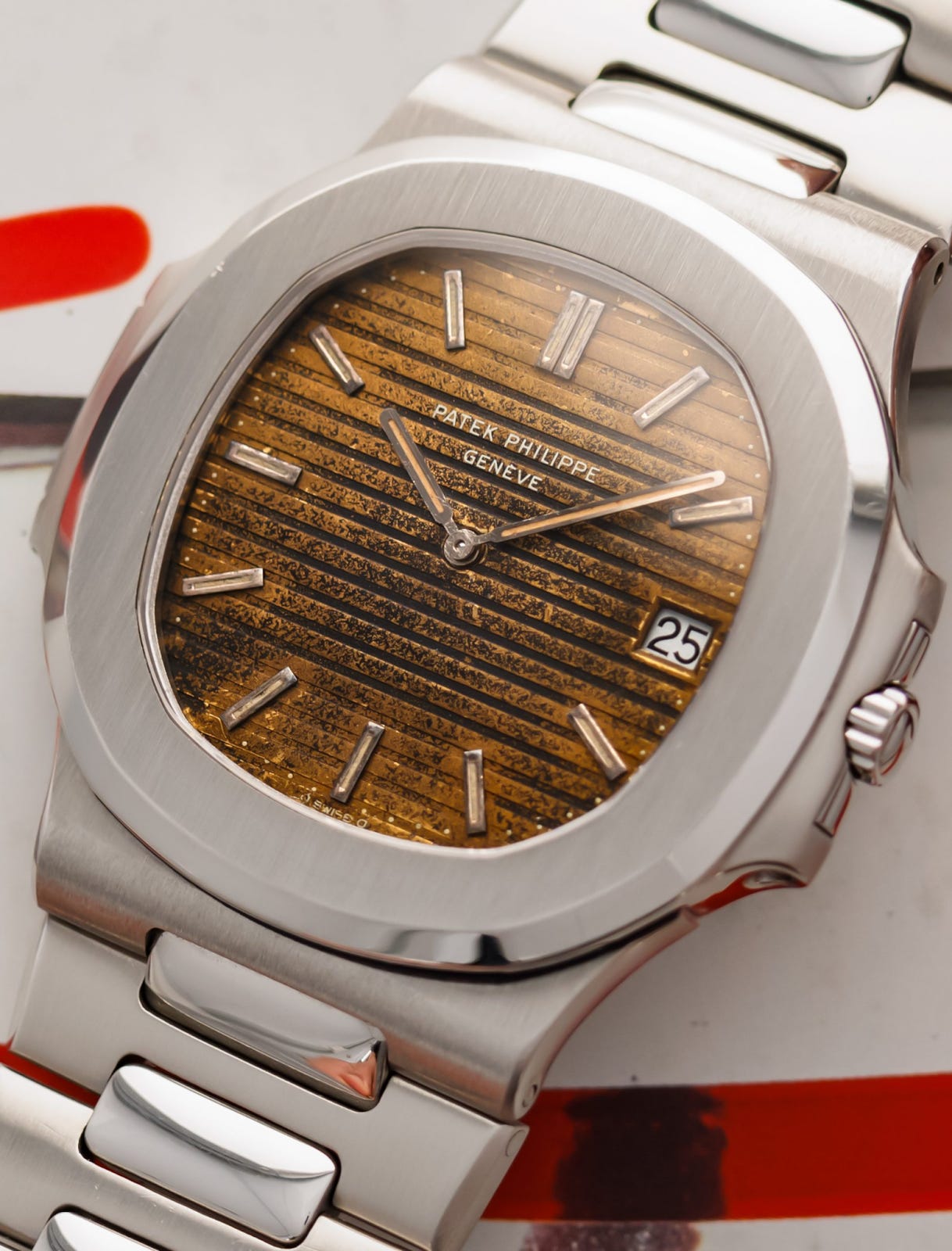
Rolex Submariner 1680/8 & 16808
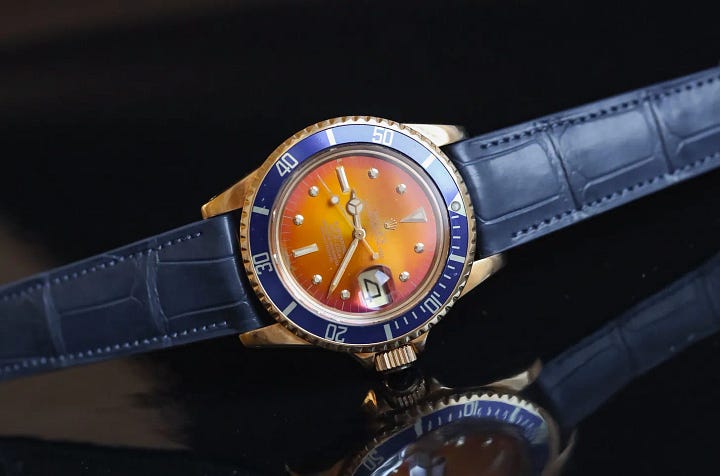
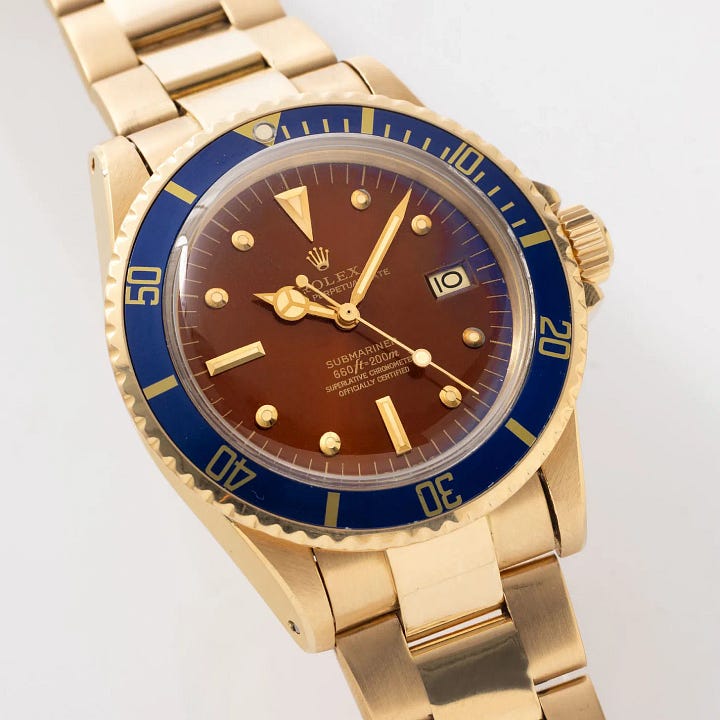
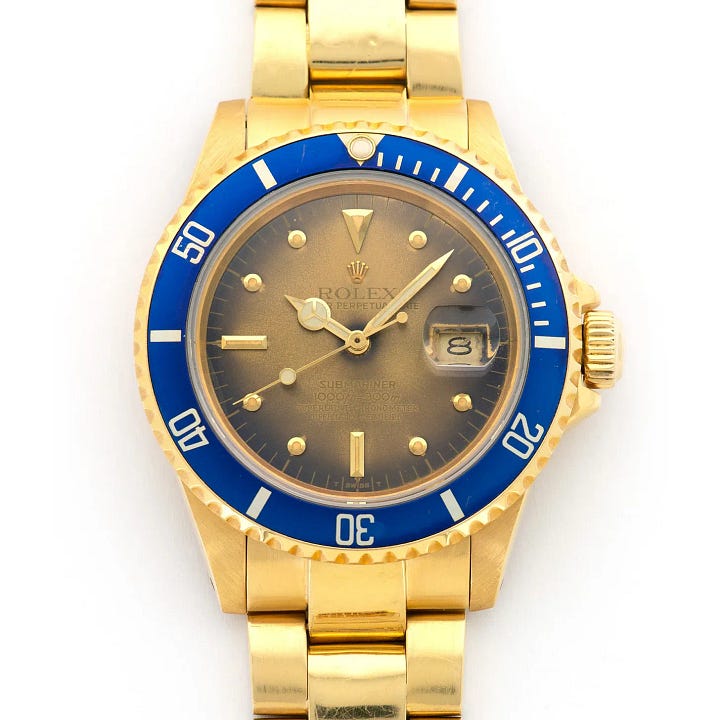
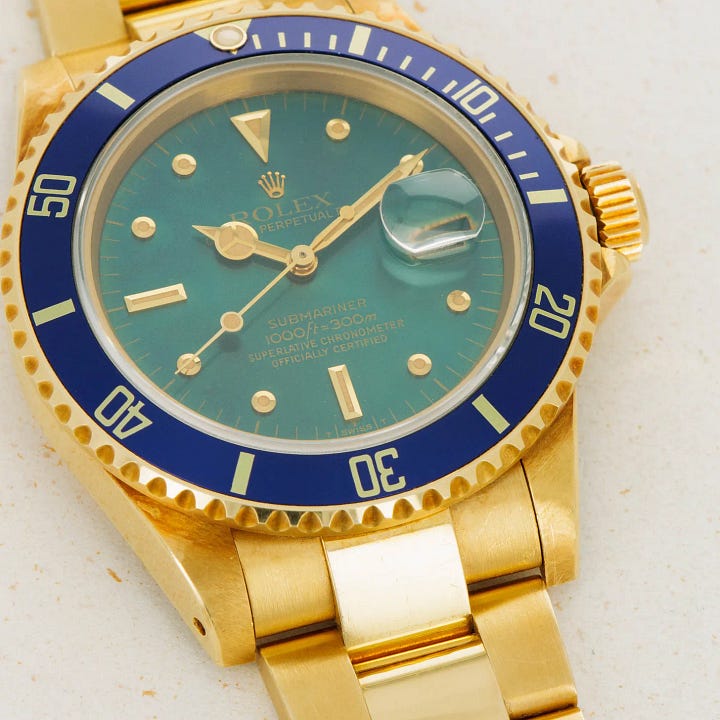
Cream Dials: Tropical or No?
I had to at least mention this. Decide for yourself after reading Hairspring.
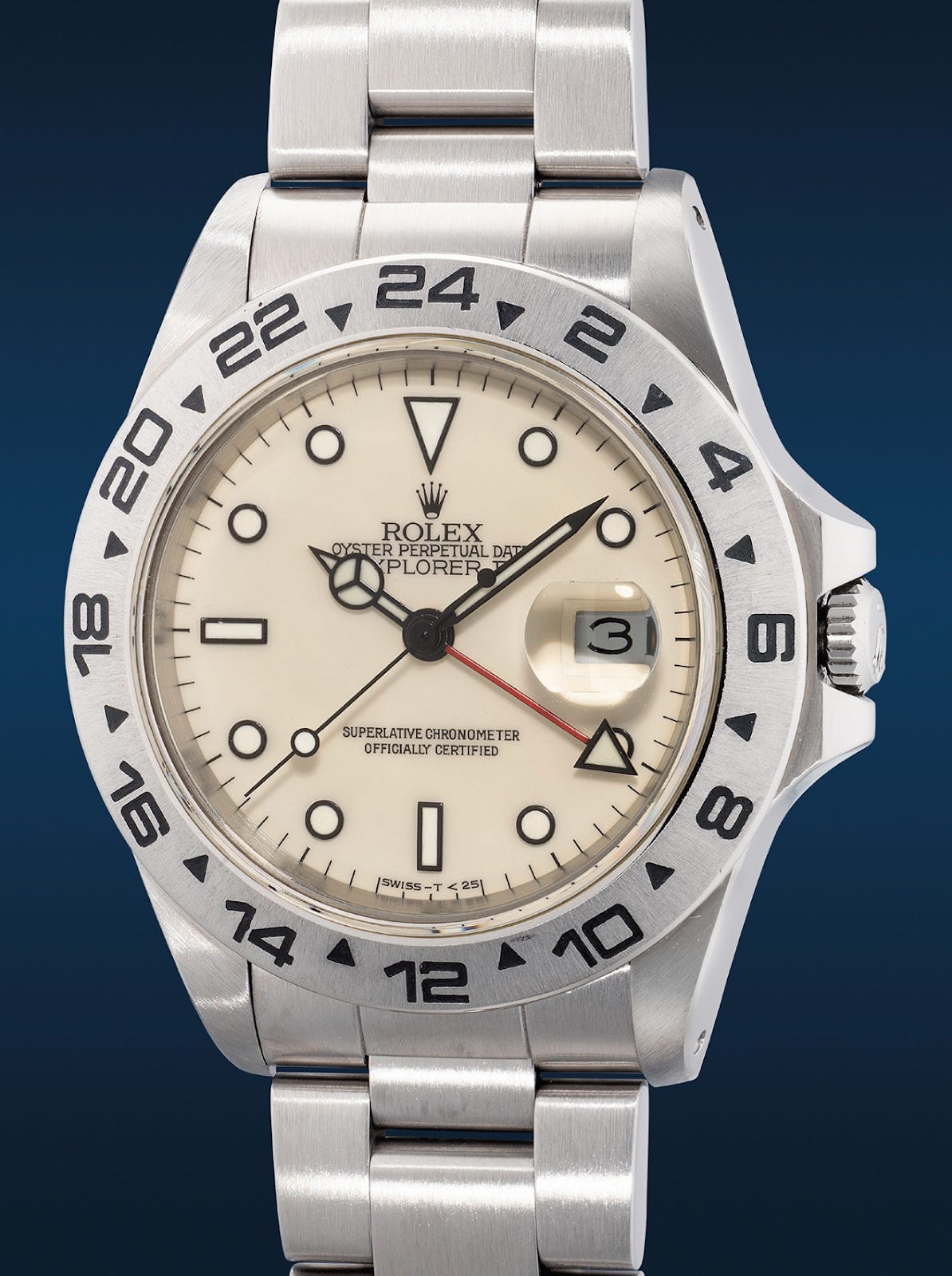
Hard Enamel Dials
I myself think this counts as patina rather than tropical, seeing as hard enamel does not react to UV light or moisture in the same way as paint—it requires firing the dial in a kiln, fusing the glass and pigment to the surface of the metal at a chemical level. Because of this, hard enamel is more resistant than paint and ages differently.
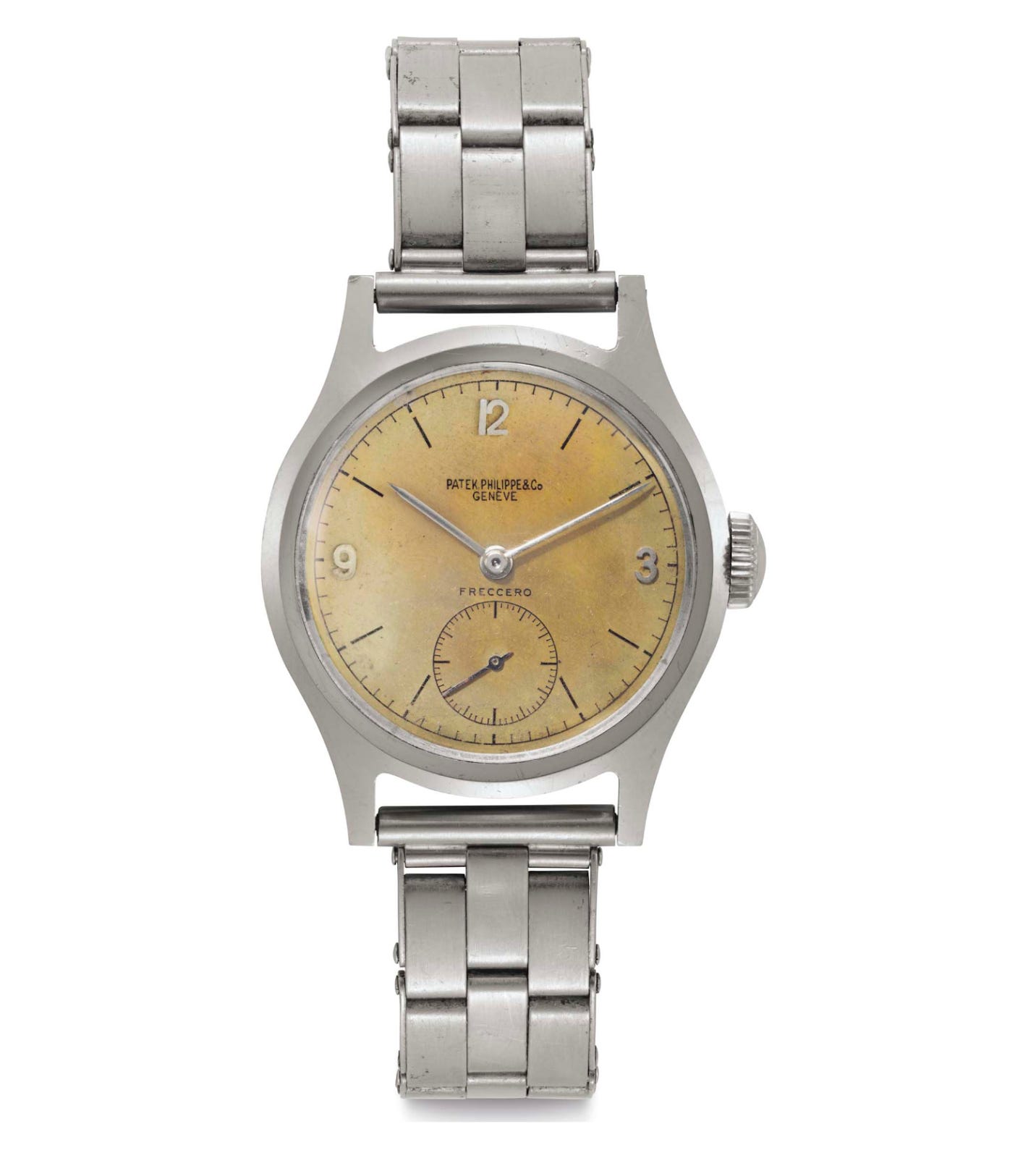
SHOPPING: TROPICAL OR JUST PLAIN DAMAGED?
I see a lot of “tropical dial” watches being floated on the market today. This seems to happen every few years—the market experiences a surge in popularity, (though to be fair, there is always a strong market for a really good one), and suddenly “tropical dial” is the top SEO term for every dealer and their mother.
The kind of “tropical” that are, TO ME, dubious:
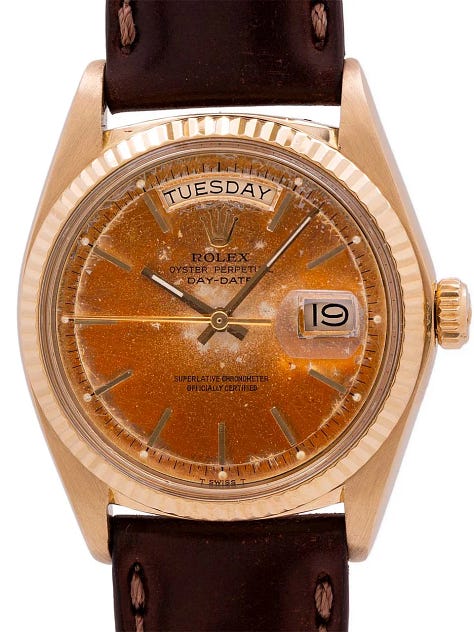
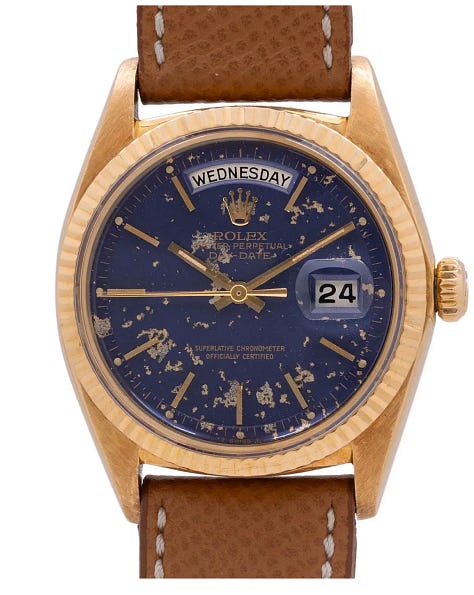
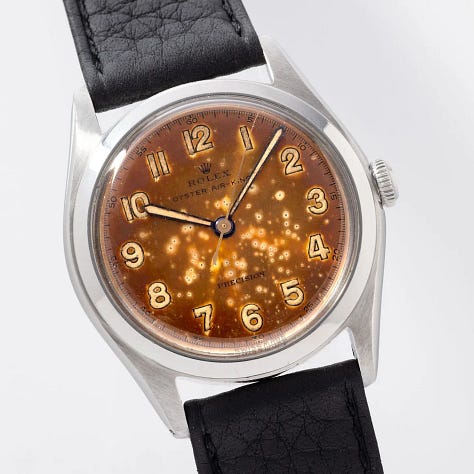
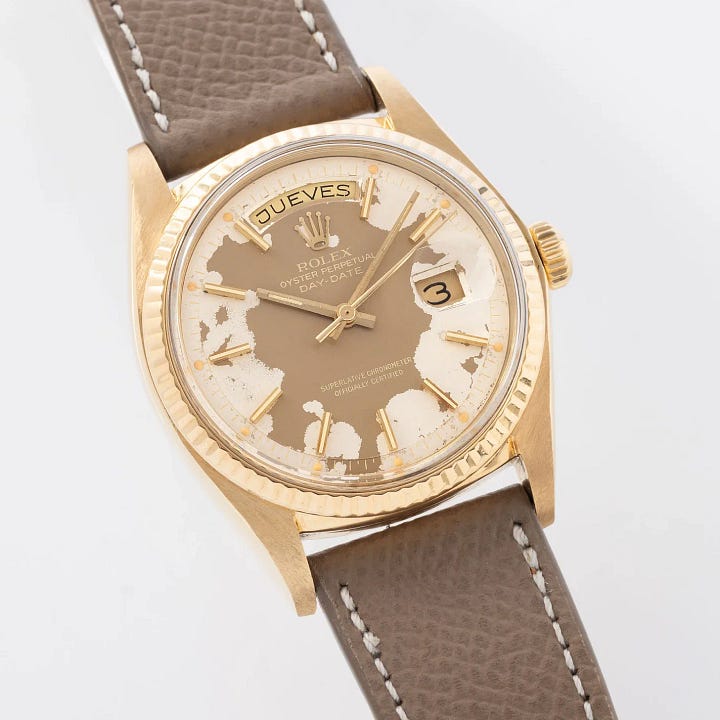
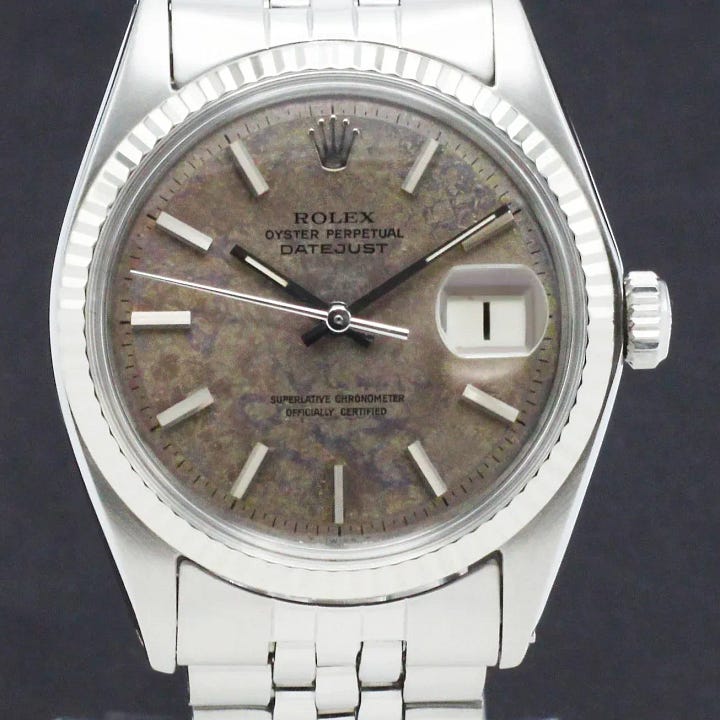
To help bring some clarity, I turned to my friends Eric Wind and Charlie Dunne at Wind Vintage.
Charlie: A tropical dial would be considered damaged from a manufacturer’s perspective and often there would be a rush to get a fresh replacement/service dial, or refinished dial mounted into the watch. I would argue that a “tropical” dial has turned brown evenly. But you’ll often hear collectors and dealers mention “hints of brown” and that a watch “appears to be turning” into a tropical dial. Most sophisticated collectors prefer an even and coherent discolored dial with attractive lume. The more symmetrical it is generally will lead to more appreciation. However, a dial does not have to be “perfect” to have a strong reaction.
Eric: There are a lot of tropical dials that are a “beautiful fiction” and were altered to be brown, or that are actually water-damaged dials where dealers have decided to call them tropical to make them sound more attractive.
Where do we draw the line between a Tropical Dial and merely a crappy dial that wasn’t cared for properly? You know what I’m talking about— the kind no one would actually want unless you slapped a faux rarity badge on it. As with all watches, beauty is in the eye of the beholder. I may find one dial to be horrendous when Joe Blow thinks it’s the best thing to meet his focus in decades.
Confused? Charlie offers some helpful words to remember: “If a watch has a bunch of nasty scratches, wear and tear and lume loss, using the word ‘tropical’ will not be embraced or well received.”




